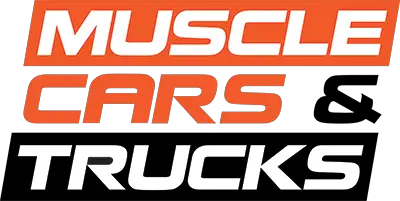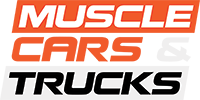While MC&T is the new kid on the block when it comes to the latest news on American performance cars, trucks, and SUVs, we’re no strangers to the Chevrolet Camaro. In fact, most founding members involved have roots in the Camaro community dating back to the 1990’s, while yours truly has driven just about every fifth and sixth-generation Camaro variant under the sun. We’ve studied the car, listened to its consumer base, and created our own wishlist that we think would make a seventh-generation Chevy Camaro a sales leader in the muscle car/pony car segment consisting also of the Ford Mustang and Dodge Challenger.
Update: This feature was published before we learned that initial plans for the seventh-generation Chevrolet Camaro have been shelved. The run of the Camaro nameplate is expected to be paused after the 2024 model year.
In the list below you’ll notice that we didn’t mention an electric or even a hybrid model. This is because we believe these vehicles would either alienate too many customers or price themselves uncompetitively out of the market. It’s not that we think GM shouldn’t build an electric performance car. It just shouldn’t be the Camaro. Below is our list of 10 things that we’d like to see on the seventh-generation Chevrolet Camaro:
1. A Better Camaro Interior
The sixth-generation Chevrolet Camaro interior is driver-focused, stylish, and futuristic. But compared to the fifth-generation model, practicality is measurably reduced. From tiny cupholders to impossible rear seats (even by pony car standards), the Camaro Six isn’t as enjoyable for its passengers as it is the driver. We think this is a reason why some buyers avoided the Camaro, and opted for a Dodge Challenger or Ford Mustang instead.

2. Improved Visibility
The tank-like outward views of the Camaro didn’t seem to be a deal-breaker for the fifth-generation model. But perhaps combined with the tighter cabin space, the similar sight lines of the current-generation Camaro weren’t doing anybody any favors. Even on track days, it’s hard to see how somebody taller than six feet could fit themselves in there with a brain bucket. Thankfully, the Camaro does offer ultrasonic lane departure warning sensors and a backup camera to help offset this. Even still, the tight space remains.
3. Built More For Comfort
While the handling of the sixth-generation Camaro is superlative, we imagine that more people would have been turned on to it if the car had a smoother, more approachable ride. We’re not taking anything away from the road course achievements of the Camaro Six, or even that it’s a better driver’s car than an F80 BMW M3, especially for the money. But judging by the growth in Dodge Challenger sales alone, the Camaro could find more success if it sacrificed a bit of its cutting-edge driving dynamics for a few more ticks in the comfort category.
4. Optional AWD
We find it a little ironic that GM is headquartered and develops its vehicles in the heart of the Snow Belt, but limits the option of all-wheel-drive on several of its products. The Chevrolet Camaro could attract new buyers that would have never considered the American icon before if it just had even just one trim level that offered all-wheel-drive. The Dodge Challenger GT has success here, and it would be silly for Chevrolet not to apply that recipe to the Camaro. We’re not saying that the Camaro should abandon its RWD heritage, but at least build on what’s possible for the here and now.

5. A Chevrolet Camaro Dodge Demon Rival
Not to take anything away from the radical achievements of the Chevrolet Camaro ZL1 1LE, but standard Camaro customers probably have never heard of the Nurburgring. Just as well, when the fifth-generation Chevrolet Camaro Z/28 was offered for the 2014 model year, only 450 were built, and were grabbed up mostly as collector’s items. For the 2015 model year, Chevrolet built an additional 2,500 or so Camaro Z/28 performance cars. Meanwhile, Dodge built 3,300 Challenger SRT Demons, and sold every one of them in a year. The lesson here is to not underestimate the seduction of raw horsepower numbers, straight-line speed, and barely legal road tires – at least when it comes to attracting the muscle car crowd.
True, that Chevrolet does offer the COPO Camaro, but in highly limited quantities – just 69 of them per year. However, these cars are not road legal, are specific for NHRA drag racing, and are far too unobtainable. The answer here might be some COPO hardware mixed with some Camaro ZL1 character. To that end, a street-legal of this nature can be built up via the Chevrolet Performance catalog, but it’s not the same as the bona fide factory offering that the 840 hp Demon represents.
6. Introduction Of All-New Camaro Trim Levels
There’s plenty of history to pull from when it comes to the Camaro. But one that would incorporate all-wheel-drive or rival the barely-legal characteristics of a Dodge Demon should deserve a new sub-moniker all its own.
7. A More Muscle Car Engine Lineup
With GM keeping the Gen V Small Block family alive and strong with its all-new T1 pickup trucks (the Chevy Silverado and GMC Sierra), the economies of scale to integrate existing engines into the Chevrolet Camaro could be present, as well. We believe that the Camaro should incorporate a few engines found in the trucks, specifically at the base level, and with some high-performance equipment borrowed from the mighty LT1 V8.
Disregard the haters that call small block engines “lazy”, because they’re full of torque, are relatively light in weight, compact, and have less moving parts than a DOHC engine of similar size. There’s a reason why Chevrolet dominates the crate engine market, and demand for these engines a la carte implies demand for them in production cars.
A 4.3L small block V6 should be the base engine in the seven-generation Chevrolet Camaro, with some internals either borrowed from or related to the LT1 V8 for added performance. Stepping up from that should be a base-level V8 engine, mirroring Dodge’s successful formula. GM already has a tiered V8 structure in its pickup trucks, with its 5.3L L84 and 6.2L L87. A beefed up 5.3L has the potential to out-play Dodge at its own game, while the existing 6.2L LT1 V8 can be offered at a premium above it. From there comes supercharging options, such as the LT4 V8 with 650 horsepower as seen in the current Camaro ZL1, and the 755 hp LT5 V8, as found in the Corvette ZR1.
8. Liftback Camaro Design
One of the reasons buyers are switching to crossovers is because they have more room and utility. So, if cars like the Camaro are going to have a business case in the future, they need to have this as well. Of course, liftbacks raise the center of gravity, and therefore can compromise some handling somewhat. But as we’ve previously mentioned, the Camaro doesn’t necessarily need to be entering Corvette levels of performance (or Corvette pricing for that matter).

9. More Agreeable Pricing
Chevrolet listened to customers by introducing the Camaro LT1 trim level. This allows buyers to access the coveted V8 engine at a more agreeable price to unlock 455 horsepower, a barking exhaust, and muscle car street cred. Ultimately, the Camaro could be more affordable to sell, and perhaps to build, if it was just more in touch with the blue-collar market it appeals to. Otherwise, there’s a lot of fun things on the used car market that’s more agreeably priced than a sixth-gen Camaro SS, including a fifth-gen Camaro SS 1LE.
10. A Balance Of Cybersecurity And Tuning Ability
It’s our understanding that General Motors is venturing down a path of extreme cybersecurity that could make ECU tuning a thing of the past. We don’t see this boding well for the performance aftermarket, and GM is risking losing a group of buyers that look to upgrade their vehicles with more horsepower. The 2020 C8 Corvette will truly test the waters of whether or not the market wants this level of cybersecurity over heightened personalization. In any case, we hope that the seventh-generation Camaro will appeal to both camps.






4.3L 340hp base RWD/AWD
5.7L 410hp L84 stroker LT (limeted touring) premium interior RWD/AWD
6.5L 520hp LT2 stroker SS396 RWD
7.0L 600hp LS7 updated Z/28 RWD rollcage, 5 piont harness, carbon ceramic brakes, track suspension, etc.
6.2L 800hp supercharged LT5 different belt, cold air intake ZL1 RWD rollcage, big scoop, etc.
That’s a nice wish list. Although this post was written just before we received word that the original Camaro 7 plans went up in smoke.